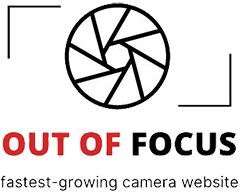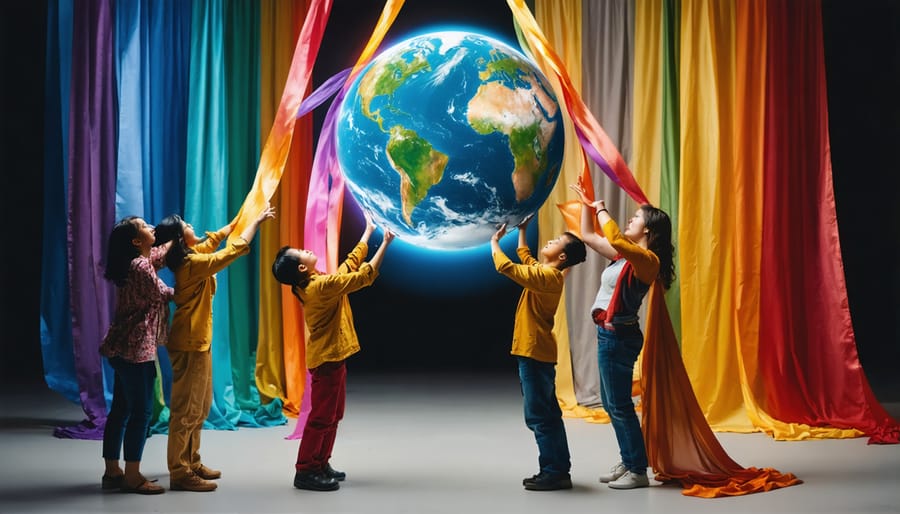
A single photograph can convey more meaning than a thousand carefully chosen words – yet mastering photographic communication demands both technical precision and emotional intelligence. From the stark photojournalism of war zones to intimate family portraits, photographs shape our understanding of the world, influence public opinion, and preserve moments that words alone cannot capture.
Photography transcends linguistic barriers, creating an immediate emotional connection between viewer and subject through composition, lighting, and timing. This visual language operates on multiple levels simultaneously – documenting reality while expressing artistic vision, conveying factual information while evoking deep emotional responses.
In today’s digital age, where billions of images are shared daily across social media platforms, understanding how to effectively communicate through photography has become an essential skill. Whether you’re a professional photographer crafting visual narratives for clients, a journalist documenting world events, or an artist expressing personal vision, the power of photographic communication lies in its ability to capture truth, evoke emotion, and bridge cultural divides.
This exploration of photographic communication will examine both the technical elements that make images effective and the psychological principles that give them impact. We’ll discover how master photographers combine these tools to create works that don’t just show – they speak.
The Universal Language of Visual Storytelling
Beyond Words: Emotional Impact
A photograph can trigger an emotional response faster than words can be processed, making it a uniquely powerful form of communication. When we look at a powerful image, our brains process the visual information and emotional content simultaneously, creating an immediate and lasting impact that often transcends cultural and linguistic barriers.
Consider how a single photograph of joy, grief, or triumph can resonate with viewers worldwide, as it bridges artistic traditions and speaks to our shared human experience. A mother’s tender embrace of her child, captured in black and white, evokes universal feelings of love and protection. The raw emotion in a athlete’s face at the moment of victory connects with viewers on a visceral level, regardless of their nationality or sport preferences.
This emotional resonance occurs because photographs tap into our visual memory system, which is deeply connected to our emotional processing centers. Studies have shown that viewers remember images with strong emotional content more vividly and for longer periods than neutral images. Professional photographers harness this power by carefully considering elements like composition, lighting, and timing to enhance the emotional impact of their work.
The key to creating emotionally compelling photographs lies in authenticity. When photographers capture genuine moments rather than staged scenes, viewers respond with authentic emotional connections, making the communication more meaningful and memorable.
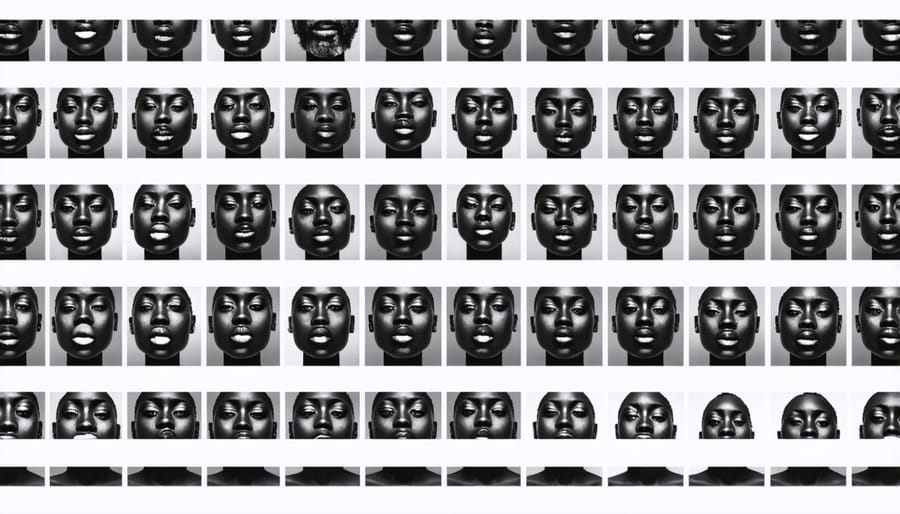
Cultural Context and Visual Interpretation
The way we interpret photographs is deeply rooted in our cultural background, making photographic communication a fascinating intersection of visual language and cultural context. What might be a powerful symbol in one culture could carry entirely different meanings – or even be offensive – in another. This is particularly evident in cultural heritage photography, where understanding local customs and symbolism is crucial for meaningful documentation.
Consider how different cultures interpret color: while white represents purity and weddings in Western cultures, it’s associated with mourning in many Eastern societies. Similarly, gestures captured in photographs can have vastly different interpretations across cultures. A simple thumbs-up gesture might be encouraging in America but could be considered offensive in parts of the Middle East.
Successful photographic communication requires photographers to be culturally aware and sensitive to these differences. When creating images for global audiences, it’s essential to consider universal visual elements that transcend cultural boundaries – such as basic human emotions, natural phenomena, or geometric patterns. Many photographers achieve this by focusing on fundamental human experiences like joy, wonder, or connection, which resonate across cultural divides.
Understanding these cultural nuances not only helps avoid misinterpretation but also enables photographers to create more impactful and meaningful images that speak to diverse audiences while respecting cultural sensitivities.
Technical Elements as Communication Tools
Composition and Message
Every photograph tells a story through its composition, and the way you frame your subject dramatically influences how viewers interpret your message. The age-old rule of thirds remains a powerful tool, creating natural focal points that guide the viewer’s eye through the image. However, composition goes far beyond this basic principle.
Camera angles speak volumes about power dynamics and relationships. A low angle shot makes subjects appear dominant and powerful, while shooting from above can diminish their presence or create a sense of vulnerability. These choices aren’t arbitrary – they’re fundamental to how your image communicates with its audience.
Consider the impact of negative space, which can evoke emotions ranging from isolation to freedom. A tightly cropped portrait creates intimacy and emotional connection, while a subject placed within vast emptiness might suggest solitude or insignificance in relation to their environment.
Leading lines, whether natural or architectural, act as visual pathways that direct attention and create movement within static images. The direction of these lines matters – diagonal lines suggest dynamism and energy, while horizontal lines communicate stability and calm.
Foreground elements can frame your subject, adding depth and context while creating a natural window for viewers to peer through. This layering of elements helps establish relationships between different parts of your image, building a visual hierarchy that supports your intended message.
Remember that successful photographic communication often comes from breaking these rules purposefully, but understanding them is essential to knowing when and why to break them.
Light and Shadow Dialogue
Light and shadow engage in a perpetual dance in photography, speaking a silent language that conveys powerful emotions and meanings. Just as a playwright uses dialogue to tell a story, photographers orchestrate light and shadow to create visual narratives that resonate with viewers on both conscious and subconscious levels.
Consider how low-key lighting, with its dramatic shadows and minimal illumination, can evoke mystery, tension, or melancholy. Film noir photographers masterfully employed this technique to create suspense and uncertainty. In contrast, high-key lighting, with its bright, even illumination and minimal shadows, often communicates optimism, clarity, or innocence.
The direction of light also plays a crucial role in this dialogue. Side lighting reveals texture and depth, creating dimensionality that draws viewers into the image. Backlighting can transform ordinary subjects into ethereal silhouettes, while frontal lighting might flatten features but reveal intricate details.
The interplay between light and shadow isn’t just about technical choices – it’s about emotional storytelling. A harsh shadow cutting across a face might suggest internal conflict, while soft, diffused light can communicate tenderness or vulnerability. Understanding this visual vocabulary allows photographers to craft images that speak volumes without uttering a single word.
Remember that mastering this dialogue requires observation and practice. Study how natural light changes throughout the day and how different lighting setups affect the mood of your subjects. This understanding becomes your artistic voice in the universal language of photography.
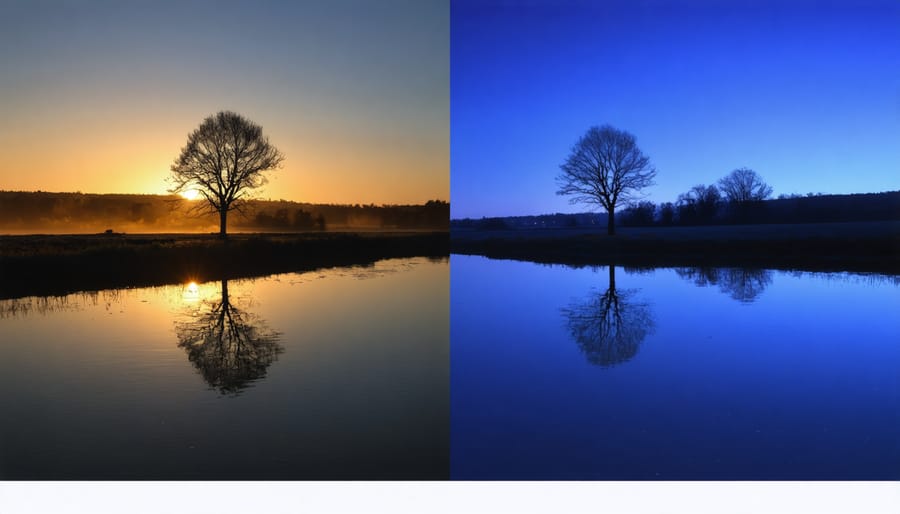
Color Psychology in Visual Communication
Color in photography is far more than just an aesthetic choice – it’s a powerful communication tool that can evoke specific emotions and convey distinct messages across cultures. Understanding color psychology is essential for photographers looking to create impactful visual narratives.
Different cultures interpret colors in unique ways, making it crucial to consider diverse cultural perspectives when composing images for global audiences. For instance, while white represents purity and weddings in Western cultures, it’s associated with mourning in many Eastern societies.
Warm colors like red and orange typically convey energy, passion, and warmth across most cultures. Red, in particular, can symbolize everything from love and prosperity in Chinese culture to danger and urgency in Western societies. Cool colors such as blue and green often evoke feelings of calm, trust, and natural harmony, making them popular choices for environmental and corporate photography.
When planning your photographic composition, consider how color combinations can strengthen your message. The strategic use of complementary colors can create visual tension, while analogous color schemes can produce harmony and cohesion. Remember that context matters – the same color can communicate different meanings depending on the subject matter, lighting conditions, and cultural setting of your image.
For maximum impact, try to align your color choices with your intended message while remaining sensitive to your target audience’s cultural background.
Digital Age Impact on Photographic Communication
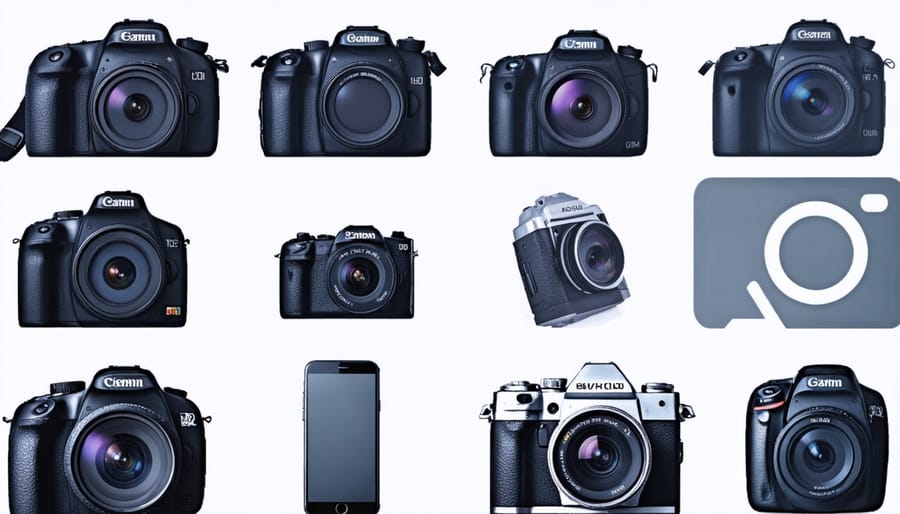
Social Media’s Visual Revolution
The rise of Instagram in 2010 marked a pivotal moment in photographic communication, fundamentally changing how we share and consume visual content. What began as a simple photo-sharing app has evolved into a global visual language, transforming everyday smartphone users into storytellers and curators of their own visual narratives.
This shift has democratized photography in unprecedented ways. No longer is compelling visual communication limited to professional photographers with expensive equipment. Smartphones, coupled with sophisticated editing apps, have equipped billions of people with the tools to engage in meaningful visual storytelling techniques that resonate across cultural and linguistic barriers.
Social media platforms have introduced new visual conventions and expectations. The square format popularized by Instagram, for instance, has become a creative constraint that photographers embrace, while features like Stories and Reels have pushed visual communication into more dynamic, ephemeral territories. These developments have spawned entirely new aesthetic approaches, from minimalist compositions to carefully curated color palettes that define personal brands and visual identities.
The impact extends beyond casual sharing. Professional photographers now must navigate a landscape where immediate, authentic content often resonates more than perfectly polished images. This has led to a fascinating blend of high-end professional work and raw, unfiltered moments, creating a rich tapestry of visual expression that was impossible before social media.
However, this revolution has also brought challenges. The pressure to constantly produce engaging visual content has led to concerns about authenticity and mental health. Additionally, the algorithms that govern content visibility often influence creative decisions, sometimes prioritizing engagement over artistic vision.
Despite these challenges, social media’s visual revolution has undeniably enriched photographic communication, creating new opportunities for connection, expression, and creative exploration in our increasingly visual world.
The Rise of Visual Literacy
Today’s digital natives have grown up in a world where visual communication is as natural as breathing. Born into an era of smartphones, social media, and instant photo sharing, they possess an innate ability to interpret and create photographic messages that previous generations had to learn deliberately.
This new generation understands complex visual narratives intuitively, processing multiple layers of meaning in photographs with remarkable speed and sophistication. They recognize subtle visual cues, decode embedded cultural references, and comprehend metaphorical representations almost instantaneously. Whether it’s understanding the meaning behind a specific filter choice on Instagram or decoding the emotional subtext of a carefully composed selfie, these skills have become second nature.
What’s particularly fascinating is how digital natives approach photographic creation. They instinctively understand concepts like visual hierarchy, composition, and emotional impact without formal training. Their photographs often tell multilayered stories, combining personal expression with cultural commentary. They’re masters of context, knowing exactly how different platforms and presentation styles affect a photograph’s message.
The rise of visual literacy among digital natives has also transformed how we communicate in both personal and professional spheres. Emoji, memes, and reaction GIFs have become legitimate forms of expression, while photo-based platforms like Instagram and TikTok have evolved into powerful storytelling mediums. This generation doesn’t just consume visual content; they actively participate in shaping visual culture through their own creative contributions.
However, this intuitive understanding comes with its own challenges. The speed at which visual messages are consumed can sometimes lead to superficial interpretation, and the constant exposure to carefully curated images can impact self-perception and social expectations. Understanding these dynamics is crucial for anyone working in photography or visual communication today.
As visual literacy continues to evolve, we’re seeing the emergence of new visual languages and conventions, shaped by the very generation that speaks them most fluently. This transformation is not just changing how we communicate through photographs; it’s fundamentally altering how we perceive and interact with the world around us.
Photography has evolved from a purely documentary medium to become one of the most powerful and versatile forms of communication in our digital age. As we’ve explored throughout this article, the way we create, share, and interpret photographs has fundamentally transformed how we connect, inform, and express ourselves in modern society.
The rise of social media platforms and smartphone photography has democratized visual communication, making everyone a potential storyteller. What was once the domain of professional photographers has expanded into a universal language that crosses cultural and linguistic barriers. This shift has brought both opportunities and challenges, from the immediacy of sharing breaking news through photographs to the need for visual literacy in an increasingly image-saturated world.
Looking ahead, photographic communication continues to evolve with emerging technologies. Artificial intelligence, augmented reality, and computational photography are pushing the boundaries of what’s possible, while simultaneously raising important questions about authenticity and truth in visual storytelling.
Yet at its core, photography remains a deeply human form of expression. Whether it’s documenting historic moments, sharing personal milestones, or creating artistic statements, photographs continue to move us, inform us, and connect us in ways that words alone cannot. As we move forward, understanding and mastering photographic communication becomes increasingly essential for anyone looking to engage effectively in our visual-first world.
